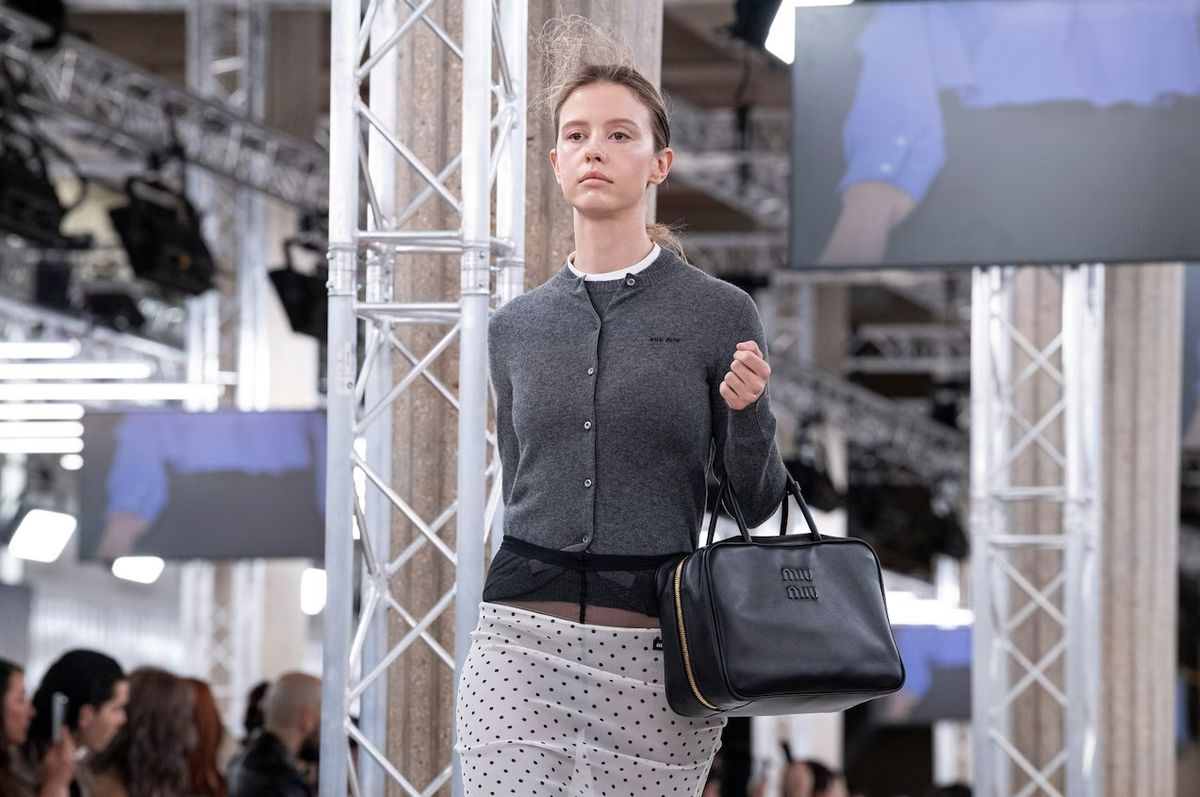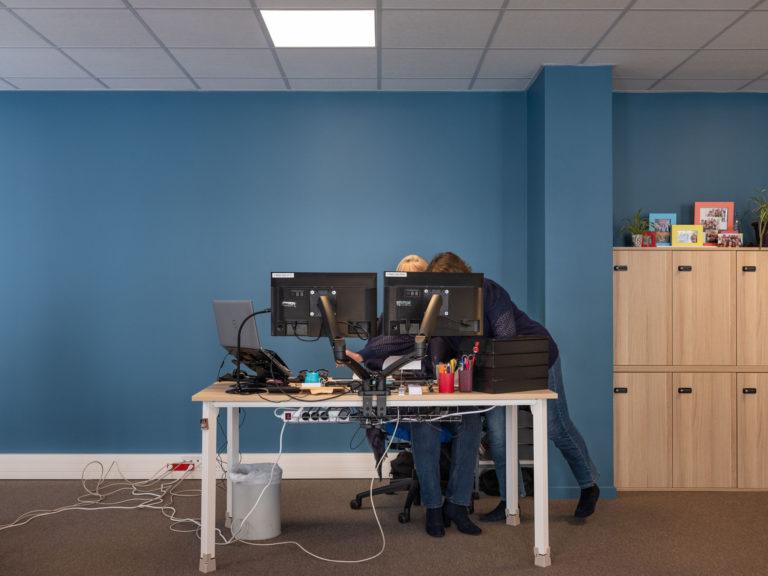The Red City of the Planet of Capitalism
2022 - Film & Video (Film & Video)
13:58 minutes
Bahar Noorizadeh
The Red City of the Planet of Capitalism is part of a three project lineage, following Bahar Noorizadeh’s research on the architecture of the Soviet Union. The video focuses on the peculiar story of the Russian architect Moisei Ginzburg, who, in the late 1920s, suddenly turned his back on Le Corbusier, the French father of urbanist modernism. While Ginzburg had been a fervent follower of Le Corbusier’s philosophy, the story says that he was converted to disurbanism in only half an hour by the urban sociologist Mikhail Okhitovich. Together, they embraced the idea that “the city must perish” (Okhitovich, 1929) as it would be a capitalist form of urban organization, marked by centralization, overcrowding and, therefore, class stratification. The video opens with glitched images of a crowded city, erratic sounds that will follow us for the rest of the piece and a line of thought that introduce the notion of “disurbanization”. Moving through a dispersed city made of 3D images, the camera crosses forests populated with strange and gleaming sculptures, to bring us from one building to other urban infrastructures, intertwined with the words Ginzburg addressed to Le Corbusier about city planning. If Noorizadeh’s work is marked by futurist aesthetic, it is rooted in an extensive archival research: the architecture is exact 3D replicas of Narkomfin F-units sketches she found, she also discovered Ginzburg and Le Corbusier’s correspondence from a blog, and historical images of the Russian Revolution punctuate the video. This oscillation between history and anticipation, accentuated by the absence of identification of all these elements, leaves us unsure of where we are: is this landscape a reminiscence of the past or a glimpse of what the future could be? And if so, is it desirable or not? In the end, The Red City of the Planet of Capitalism is as much a film as it is an essay. It examines a moment in the history of architecture, offering an alternative representation of communist projects, often looked at with the nostalgia and contempt that tinges all failed utopias.
Bahar Noorizadeh is filmmaker, writer, and platform designer. She works on the reformulation of hegemonic time narratives as they collapse in the face of speculation: philosophical, financial, legal, futural, etc. Noorizadeh is a founding member of BLOCC (Building Leverage over Creative Capitalism), a research and education platform that proposes pedagogy as a strategy to alter the relationship between Contemporary Art and urban renewal. Her current research examines the intersections of finance, Contemporary Art and emerging technology, building on the notion of “Weird Economies” to precipitate a cross-disciplinary approach to economic futurism and post-financialization imaginaries. At a time when the discourse around capitalism, economies, financialization and neoliberalism is abundant but lacks serious depths into the complexities, history and potentials it holds, Noorizadeh’s practice maintains an important critical proposition that problematizes how we understand and think of these issues while simultaneously urging us to reconsider our position on them.
Colors:
Other related works, blended automatically
» see more

© » KADIST
Bahar Noorizadeh
2018After Scarcity is a sci-fi video-essay that tracks Soviet cyberneticians (1950s – 1980s) in their attempt to build a fully-automated planned economy...
Related works sharing similar palette
» see more

© » WALLPAPER*
Miu Miu beauty line will launch in 2025 | Wallpaper (Image credit: Courtesy of Miu Miu) By Hannah Tindle published 9 February 2024 Today (9 February 2024) Miu Miu has announced its exclusive worldwide partnership and licence agreement with L’Oréal Groupe for the creation, development, and distribution of a luxury beauty line...

© » KADIST
Gabriel Orozco
1992Gabriel Orozco often documents found situations in the natural or urban landscape...
Other works by: » Bahar Noorizadeh
» see more

© » KADIST
Bahar Noorizadeh
2018After Scarcity is a sci-fi video-essay that tracks Soviet cyberneticians (1950s – 1980s) in their attempt to build a fully-automated planned economy...
Related works found in the same semantic group
» see more

© » EYE OF PHOTOGRAPHY
© 2023 All rights reserved - The Eye of Photography Olivier Culmann, URSSAF Normandie, site du Havre @ Olivier Culmann Le Havre, Seine-Maritime, Normandie, France 10/05/2023 © Olivier Culmann / Tendance Floue @ Thomas Jorion @ Sidonie Van Den @ Isabelle Scotta @ Carlo Lombardi S From October 21st to January 7th, 2024, for its 14th edition, 25 international photographers, both established and emerging, can be discovered in an open-air exhibition tour throughout the city, on the beach, and indoors at Point de Vue and Les Franciscaines...

© » KADIST
Michelle and Noel Keserwany
2022Les Chenilles by Michelle and Noël Keserwany is a sensual film that translates the source of women’s oppression into the means for their liberation...

© » KADIST
Guy Woueté
2019The video installation Le Fou Postcolonial Insane by Guy Woueté is a series of five videos that examine the concept of insanity in the post-colonial Democratic Republic of Congo...

© » SLASH PARIS
Laurent Le Deunff — Easter Eggs — Galerie Semiose — Exposition — Slash Paris Connexion Newsletter Twitter Facebook Laurent Le Deunff — Easter Eggs — Galerie Semiose — Exposition — Slash Paris Français English Accueil Événements Artistes Lieux Magazine Vidéos Retour Laurent Le Deunff — Easter Eggs Exposition Dessin, sculpture, techniques mixtes Laurent Le Deunff, vue de l’exposition Easter Eggs, galerie Semiose, Paris Courtesy of the artist & Semiose, Paris — Photo : DR Laurent Le Deunff Easter Eggs Encore 19 jours : 18 novembre → 30 décembre 2023 Les sculptures présentées dans l’exposition Easter Eggs se présentent comme des totems composés d’une suite inattendue d’objets, culturels ou naturels, associés avec une très grande liberté...


